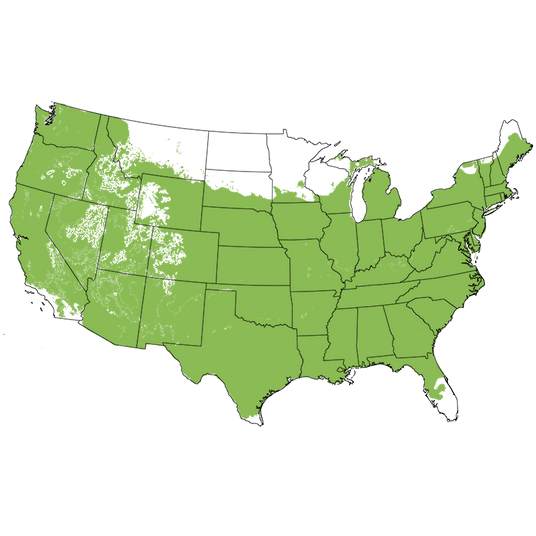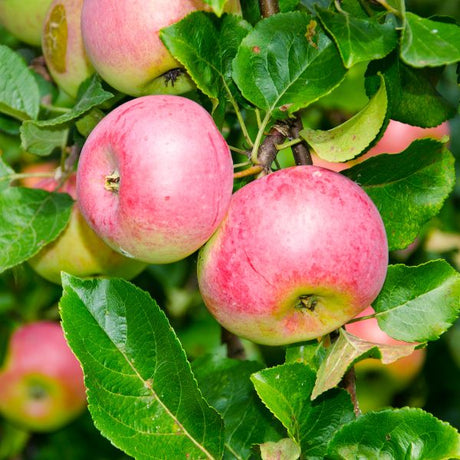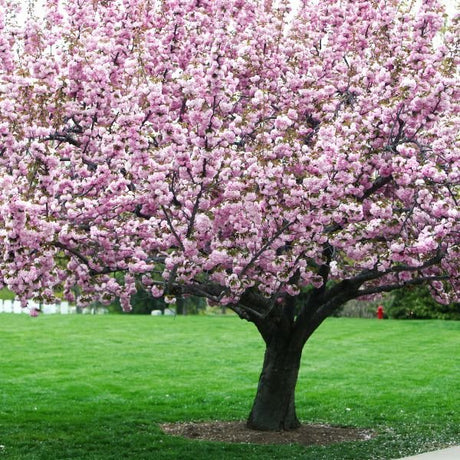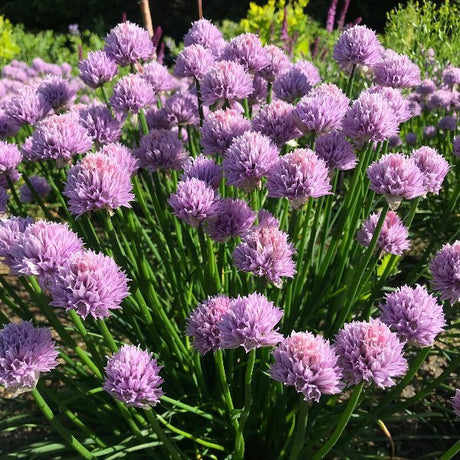Pink Double Knock Out® Shrub Rose
Rosa 'Radtkopink'
- Stay Protected with Plant Sentry ™
Pink Double Knock Out® Shrub Rose - #1 Container is backordered and will ship as soon as it is back in stock.
Plant Sentry™
Plant Sentry™

Plant Sentry™ Protected
Your order is protected by our compliance system that:
- Prevents restricted plants from shipping to your state
- Ensures plants meet your state's agricultural requirements
- Protects gardens from invasive pests and diseases
Delivery and Shipping
Delivery and Shipping
Delivery and Shipping
Fast, Safe Plant Delivery
Ships in 3-4 business days • Tracking provided • Weather protected
| Under $50 | $9.99 |
| $50 - $99.99 | $14.99 |
| $100 - $149.99 | $16.99 |
| $150+ | $24.99 |
✓ Zone-specific timing • ✓ Professional packaging • ✓ Health guarantee
Understanding Plant Options
Nature Hills offers plants in two main formats:
- Container Plants: Grown in pots with soil, sized by container volume and plant age
- Bare Root Plants: Dormant plants without soil, sized by height measurements
Container Plant Sizes
Container sizes indicate plant age and growing capacity rather than liquid volume equivalents. Our containers follow industry-standard nursery "trade gallon" specifications, which differ from standard liquid gallon measurements.
Young Plants (6 months to 18 months old)
| Container Size | Actual Volume | Metric Equivalent |
|---|---|---|
| 2" x 2" x 3" | 0.18 - 0.21 dry quarts | 0.20 - 0.23 dry liters |
| 4" Container | 0.31 - 0.87 dry quarts | 0.35 - 0.96 dry liters |
| 4.5" Container | 0.65 dry quarts | 0.72 dry liters |
| 6" Container | 1.4 dry quarts | 1.59 dry liters |
| 1 Quart | 1 dry quart | 1.1 dry liters |
| 5.5" Container | 1.89 dry quarts | 2.08 dry liters |
Established Plants (18 months to 2.5 years old)
| Container Size | Actual Volume | Metric Equivalent |
|---|---|---|
| 2 Quart | 2 dry quarts | 2.2 dry liters |
| #1 Container | 2.26 - 3.73 dry quarts | 2.49 - 4.11 dry liters |
| 5" x 5" x 12" | 3.5 - 4.3 dry quarts | 3.85 - 4.74 dry liters |
Mature Plants (2-4 years old)
| Container Size | Actual Volume | Metric Equivalent |
|---|---|---|
| #2 Container | 1.19 - 1.76 dry gallons | 5.24 - 7.75 dry liters |
| #3 Container | 2.15 - 2.76 dry gallons | 8.14 - 12.16 dry liters |
Large Plants (3-5 years old)
| Container Size | Actual Volume | Metric Equivalent |
|---|---|---|
| #5 Container | 2.92 - 4.62 dry gallons | 12.86 - 20.35 dry liters |
| #6 Container | 5.25 - 6.01 dry gallons | 23.12 - 26.42 dry liters |
| #7 Container | 5.98 - 6.53 dry gallons | 26.34 - 28.76 dry liters |
Bare Root Plants
Bare root plants are sold by height from the root system to the top of the plant. Plants may exceed minimum height requirements.
Common Sizes:
- Trees: 1 foot, 2 feet, 3 feet, 4 feet, 5 feet, 6 feet
- Shrubs & Perennials: 1 foot, 18 inches, 2 feet
Important Notes
Container Volume Specifications
- Trade Gallon Standard: Our containers follow industry-standard "trade gallon" specifications established by the American National Standards Institute (ANSI Z60.1) for nursery stock
- Volume Variations: Actual soil volume may vary due to plant root systems and growing medium settlement
- Age Indicators: Container size primarily indicates plant age and maturity rather than liquid volume equivalents
Growing Conditions
- Plant size can vary based on variety and growing conditions
- Container size helps indicate plant maturity and establishment level
- Larger containers generally mean more established root systems and faster landscape establishment
Seasonal Availability
- Bare root plants are available seasonally when dormant
- Container plants are available throughout the growing season
- Specific varieties may have limited availability in certain sizes
Questions?
For questions about specific plant sizes or availability, please contact our plant experts who can help you choose the right size for your landscape needs.
Plant Highlights
Pink Double Knock Out® Shrub Rose highlights at a glance!
-
Brand
-
Plant Class
-
Botanical Name
-
Characteristics
-
Suitable Space
-
Growing Zones5, 6, 7, 8, 9
-
Mature Height
-
Mature Spread
-
Sun ExposureFull Sun
-
Moisture
-
Soil
-
Growth RateMedium
-
Flower Color
-
Fall Color
-
Pollinator FriendlyYes
-
Pruning Time
-
Bloom PeriodLate Spring, Summer, Fall
-
Photos Provided ByStar Roses and Plants - www.starrosesandplants.com

Growing Zones 5-9
What makes Pink Double Knock Out® Rose special?
It blooms nonstop from spring to fall with bubble-gum pink double flowers that need zero deadheading—the easiest rose you'll ever grow.
What Growing Conditions Does It Need?
Pink Double Knock Out® Rose thrives in USDA zones 5-9 with at least 6 hours of full sun daily. Plant in well-drained soil that doesn't stay soggy after rain. This compact shrub reaches 3-4 feet tall and wide at maturity.
The more sun you give it, the more flowers you'll get. If your soil holds water and creates puddles, build a raised bed or grow in containers instead.
How Do I Plant and Care for Pink Double Knock Out® Rose?
Plant in spring or fall when temperatures are mild. Dig a hole twice as wide as the root ball and just as deep. Mix in compost and a packet of root booster for best results.
Water regularly during the first year to establish strong roots. Once settled, these roses handle heat and drought well but bloom best with consistent moisture. Apply 3-4 inches of mulch to retain moisture and regulate soil temperature.
Feed with slow-release rose fertilizer in early spring and mid-summer. The best part? No deadheading needed—spent blooms drop on their own. Prune to 6 inches in early spring if you want to control size.
What Are the Key Benefits?
You'll get months of pink blooms without the fuss of traditional roses. These tough shrubs resist black spot, powdery mildew, and rust even in humid climates. Perfect for mass plantings or foundation beds.
The flowers work beautifully as cut arrangements, and any blooms left in fall turn into orange rose hips. Birds love the hips, or you can use them for vitamin C tea and winter decorations.
Unlike grafted roses, Pink Double Knock Out® grows on its own roots. If winter damage occurs, it grows back true to form—no weird rootstock surprises.
What Should I Know Before Buying?
Space plants 2 feet apart for a continuous hedge or 3-4 feet for individual specimens. These roses have thorns, so give them space near walkways and wear gloves when pruning.
Plant with other Knock Out® varieties for a rainbow effect, or pair with boxwood hedges for a formal look. They also excel in containers on sunny patios.
Best planting times are early spring or fall when temperatures are cooler. Consider adding companion perennials that enjoy similar sun and water conditions for a complete garden design.













